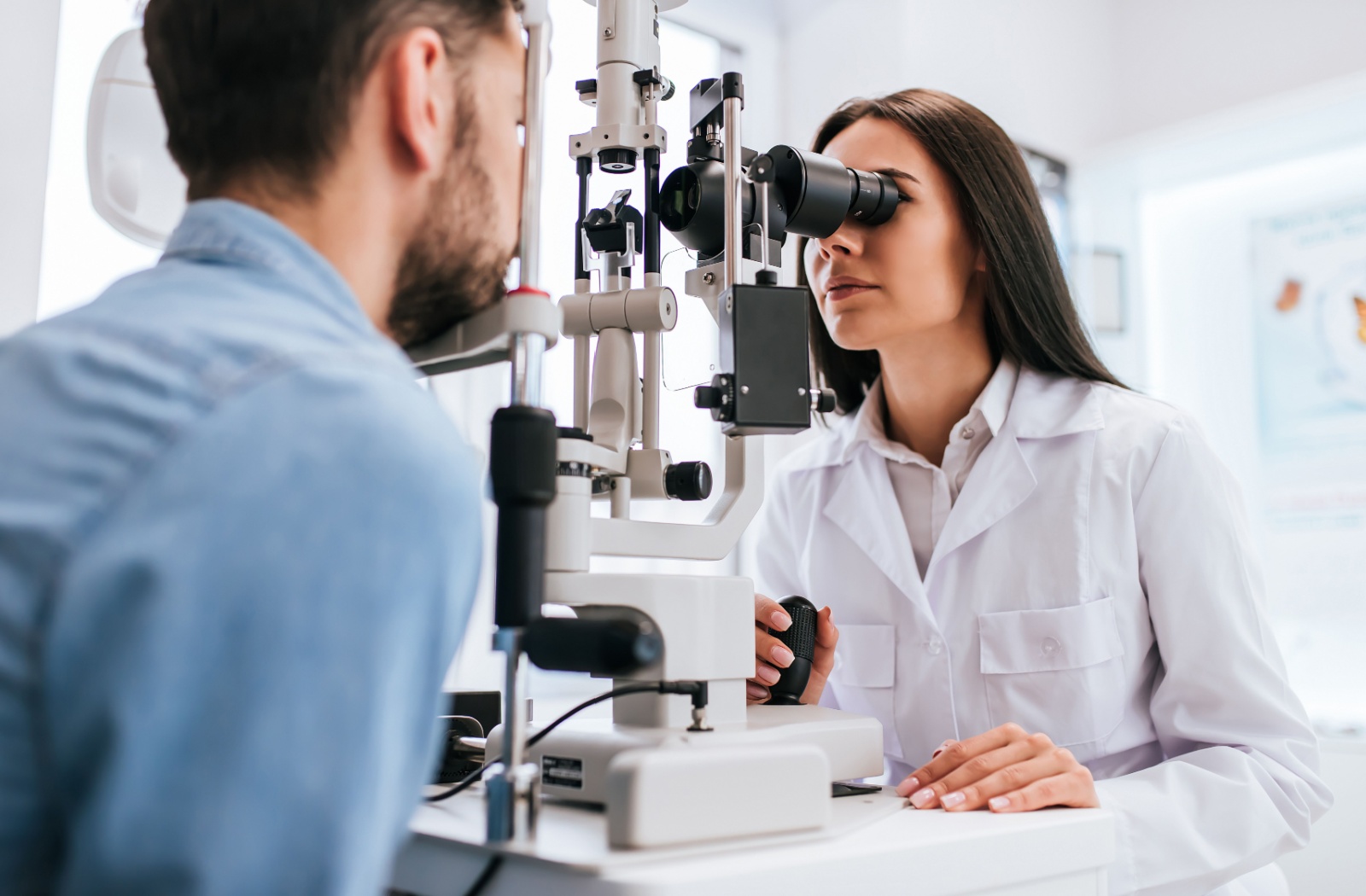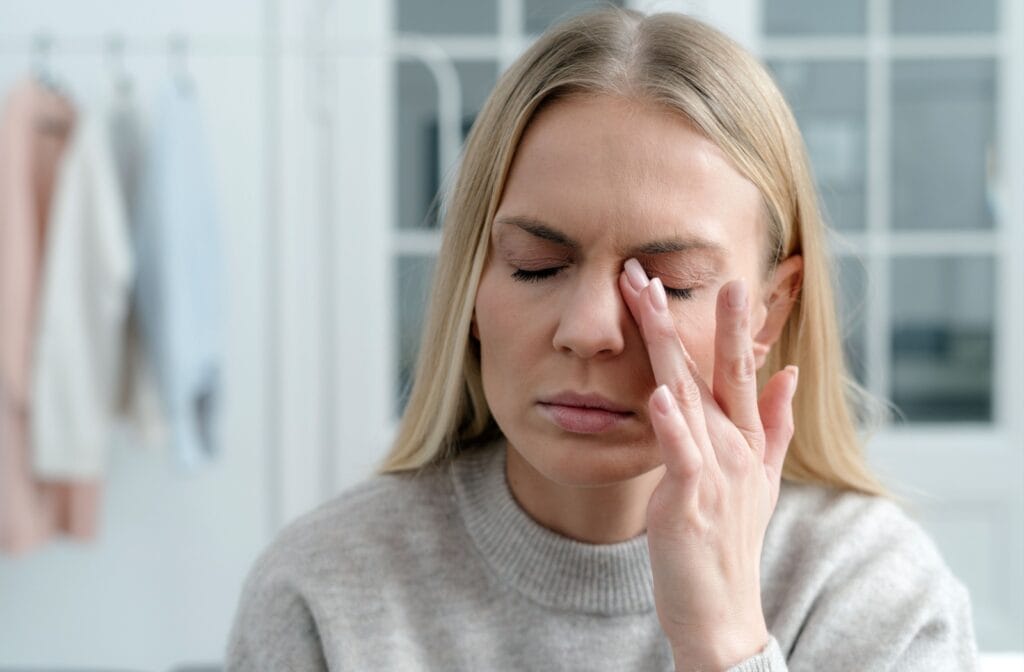When you notice discomfort and visible redness in your eyes, it can be alarming—especially if you don’t know what it is or how to treat it. Pink eye and styes, 2 common eye conditions, can easily be mistaken for one another.
Typically, pink eye is identified by inflammation of the whites of the eyes. Styes cause visible redness on the eyelids rather than the eye itself. Each of these conditions has a unique approach to treatment that often requires an optometrist’s help.
What Is Pink Eye?
The whites of your eyes and inside of your eyelids are lined with a thin, clear tissue called the conjunctiva. Sometimes, this tissue becomes inflamed, making the blood vessels much more visible and giving you the appearance of red or pink eyes. This condition is called conjunctivitis, more commonly called “pink eye.”
Pink eye develops when an infection or bodily reaction causes the tissue to become inflamed. However, there’s a catch—there are 3 most common types of pink eye, each with its symptoms and treatment.
Allergic Pink Eye
When you come into contact with an allergen like pollen or pet dander, your immune system can go into overdrive. Allergens often affect highly sensitive areas of the body–like your eyes–leading to inflammation as your body tries to purge the contaminant.
Allergic reactions that affect the eyes often cause allergic pink eye. While this type of pink eye isn’t contagious, it often causes:
- Itchiness
- Redness
- Excessive tearing
Fortunately, you can identify allergic pink eye by looking for other allergy symptoms like sneezing or an itchy throat. If you’re experiencing these symptoms, try over-the-counter antihistamines or allergic eye drops to help you find relief. If your symptoms persist, visit your optometrist.
Bacterial Pink Eye
Bacterial pink eye develops when bacteria reach the conjunctiva and initiate an infectious response. A highly contagious variant of pink eye, bacterial pink eye can spread rapidly—especially in close-contact settings, like schools or offices.
You can usually identify this form by:
- Redness
- Swelling
- Itching
- A yellow-green discharge around the eyes
- Crusty eyelashes
Though contagious, bacterial pink eye can be treated with antibiotics. Your optometrist can give you a prescription and advice on reducing your symptoms and preventing the spread of the condition.
Viral Pink Eye
Viral pink eye is similar to bacterial pink eye but develops due to a viral infection. Highly contagious, viral pink eye is often associated with:
- Redness
- Watery eyes
- Gritty sensations
- Watery discharge or excessive tearing
You can usually recognize viral pink eye symptoms because they are similar to–or accompany –a respiratory virus. You may experience a runny nose, sore throat, coughing, or sneezing. Unfortunately, there is no in-office treatment for viral pink eye; you’ll need to wait for the virus to run its course. During this time, it is critical to maintain proper hygiene to reduce the risk of transmission. Regular hand washing, avoiding touching your face, and using clean tissues or towels can significantly reduce the risk of spreading the infection to those around you. Your optometrist can advise you on reducing your symptoms and finding relief.
What Causes Styes?
Hordeoulums, more commonly called “styes,” are small, painful lumps that appear on the eyelids. These can occur inside or outside the eyelid and typically develop due to bacterial buildup inside oil glands or hair follicles.
These can often be irritating and can cause:
- Redness around the affected eyelid
- Swelling and tenderness
- Pain or discomfort at the site
- A small, painful lump on the eyelid
- Crusty or flaky eyelid skin
- Increased sensitivity to light
- Watery eyes
It’s easy to mistake a stye for a pimple; they often appear similarly. However, styes can sometimes put extra pressure on the eye if they swell enough, leading to blurry vision or light sensitivity.
It’s important to note that you should never try to pop a stye yourself. Because they’re full of bacteria, popping a stye can spread the infection around the eye and worsen symptoms. Usually, styes recede independently, but they can sometimes lead to a chalazion—a larger hard bump of built-up bacteria and oils.

How to Treat a Stye
Treating a stye involves several steps designed to alleviate discomfort while promoting natural healing. Try using warm compresses over a few days—this can help reduce swelling, liquify any blockages in the glands or follicles, and promote natural drainage. If needed, feel free to take over-the-counter pain relievers. While styes don’t always cause pain, they usually cause discomfort.
Talk to your optometrist if your stye doesn’t go away over the next few days. They can examine the stye to determine whether or not you’re at risk of the condition worsening. In some situations, they may recommend antibiotics to remove the infection or even try an in-office draining to reduce your symptoms.
When to See Your Optometrist
While pink eye and styes are common problems that can often be treated at home, it can help to get a professional diagnosis. If you’re dealing with redness, irritation, or any other eye-related symptoms, come talk to our team at ERC Optometry. We can help you find relief, so book your appointment today!

